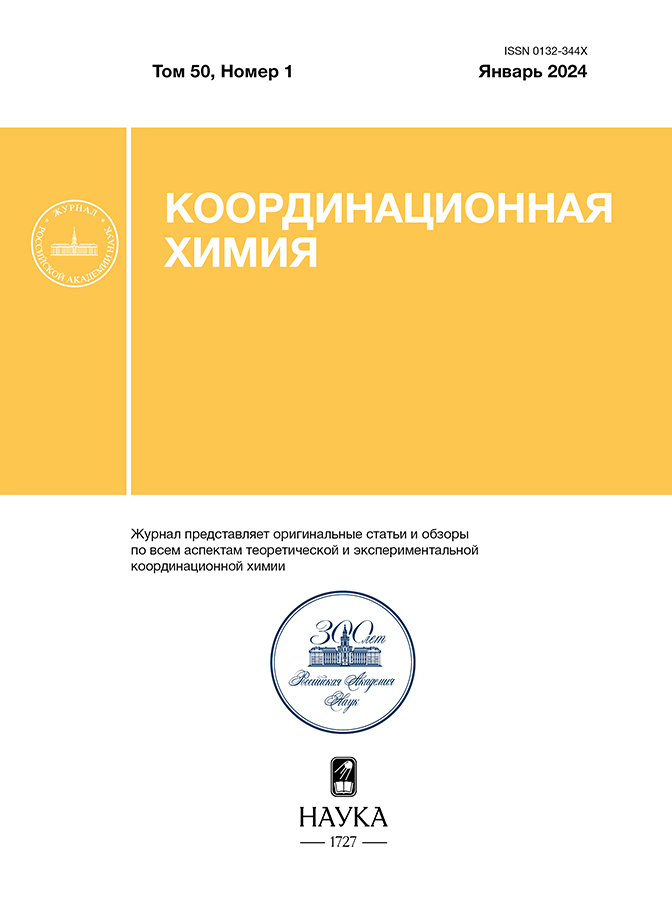Delayed Drug Release Films Based on MIL-100(Fe) Metal-Organic Framework
- Authors: Pak A.M.1,2, Volkhina T.N.3, Nelyubina Y.V.1,2, Novikov V.V.2
-
Affiliations:
- Nesmeyanov Institute of Organic Element Compounds, Russian Academy of Sciences
- Moscow Institute of Physics and Technology (National Research University)
- Mendeleev University of Chemical Technology of Russia
- Issue: Vol 50, No 1 (2024)
- Pages: 19-25
- Section: Articles
- URL: https://rjonco.com/0132-344X/article/view/667625
- DOI: https://doi.org/10.31857/S0132344X24010035
- EDN: https://elibrary.ru/OSOIPY
- ID: 667625
Cite item
Abstract
Biocompatible metal-organic framework MIL-100(Fe) was used as a container for a model hydrophobic active pharmaceutical ingredient, ibuprofen, in composite films based on gelatin, pectin, and kappacarrageenan. According to powder X-ray diffraction and scanning electron microscopy data, the metal-organic framework retained the crystal structure and its particles were uniformly distributed throughout the hydrocolloid matrix. Testing of the obtained film materials under simulated biological conditions using chromatography – mass spectrometry analysis showed that they are applicable as a dosage form for slow release of active pharmaceutical ingredients.
Full Text
About the authors
A. M. Pak
Nesmeyanov Institute of Organic Element Compounds, Russian Academy of Sciences; Moscow Institute of Physics and Technology (National Research University)
Email: novikov84@gmail.com
Russian Federation, Moscow; Moscow
T. N. Volkhina
Mendeleev University of Chemical Technology of Russia
Email: novikov84@gmail.com
Russian Federation, Moscow
Yu. V. Nelyubina
Nesmeyanov Institute of Organic Element Compounds, Russian Academy of Sciences; Moscow Institute of Physics and Technology (National Research University)
Email: novikov84@gmail.com
Russian Federation, Moscow; Moscow
V. V. Novikov
Moscow Institute of Physics and Technology (National Research University)
Author for correspondence.
Email: novikov84@gmail.com
Russian Federation, Moscow
References
- Abebe A., Akseli I., Sprockel O. et al. // Int. J. Pharm. 2014. V. 461. № 1. P. 549.
- Roshan K., Keerthy H. S. // Asian J. Pharm. Res. Dev. 2021. V 9. № 3. P. 66.
- Markovic M.D., Panic V. V., Seslija S. I. et al. // Polym. Eng. Sci. 2020. V. 60. № 8. P. 2008.
- Mathieu D., Linke J.-C., Wattel F. // Handbook on Hyperbaric Medicine / Еd. Mathieu D. Dordrecht: Springer Netherlands, 2006. P. 401.
- Kadajji V.G., Betageri G. V. // Polymers. 2011. V. 3. № 4. P. 1972.
- Zhao J., Wei F., Xu W. et al. // Appl. Surf. Sci. 2020. V. 510. P. 145418.
- Пак А.М., Захарченко Е. Н., Корлюков А. А. et al. // Коор. химия. 2022. V. 48. № 4. P. 200.
- Pak A.M., Zakharchenko E. N., Korlyukov A. A. et al. // Russ. J. Coord. Chem. 2022. V. 48. № 4. P. 195.
- Kirchon A., Feng L., Drake H. F. et al. // Chem. Soc. Rev. The Royal Society of Chemistry. 2018. V. 47. № 23. P. 8611.
- Chen L., Zhang X., Cheng X. et al. // Nanoscale Adv. RSC. 2020. V. 2. № 7. P. 2628.
- Shekhah O., Liu J., Fischer R. A. et al. // Chem. Soc. Rev. The Royal Society of Chemistry. 2011. V. 40. № 2. P. 1081.
- Gangu K.K., Maddila S., Mukkamala S. B. et al. // Inorganica Chim. Acta. 2016. V. 446. P. 61.
- Quijia C.R., Lima C., Silva C. et al. // J. Drug Deliv. Sci. Technol. 2021. V. 61. P. 102217.
- Canioni R., Roch-Marchal C., Sécheresse F. et al. // J. Mater. Chem. 2011. V. 21. № 4. P. 1226.
- Zhong G., Liu D., Zhang J. // Cryst. Growth Des. 2018. V. 18. № 12. P. 7730.
- Guesh K., Caiuby C. A.D., Mayoral Á. et al. // Cryst. Growth Des. 2017. V. 17. № 4. P. 1806.
- Farris S., Schaich K. M., Liu L. et al. // Food Hydrocoll.
Supplementary files















